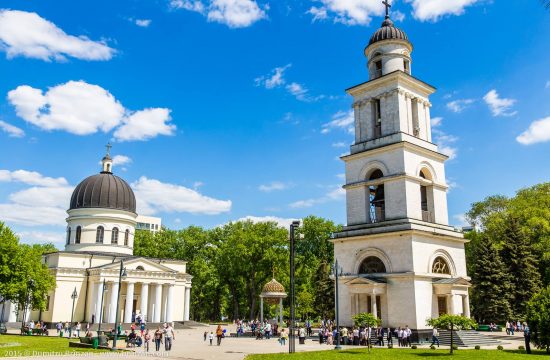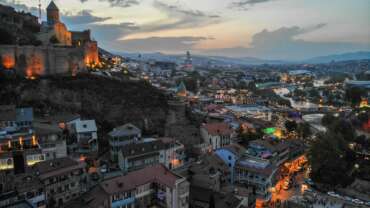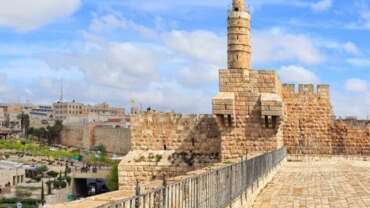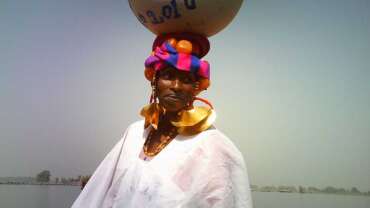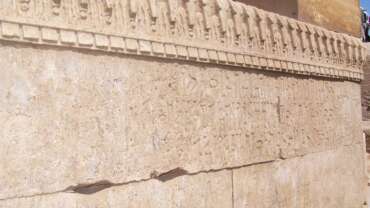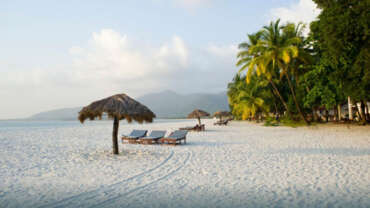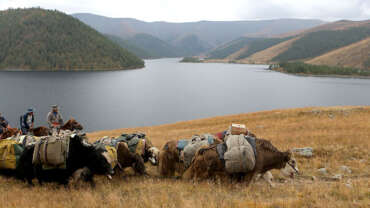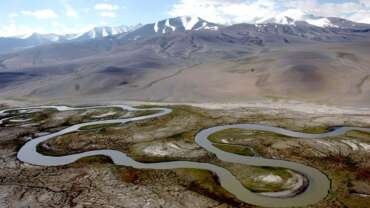Moldova - Discover the routes of life!
Moldova, an Eastern European country and former Soviet republic, has varied terrain including forests, rocky hills and vineyards. Its wine regions include Nistreana, known for reds, and Codru, home to some of the world’s largest cellars. Capital Chișinău has Soviet-style architecture and the National Museum of History, exhibiting art and ethnographic collections that reflect cultural links with neighboring Romania.
Although it has a small area, the Republic of Moldova as a tourist destination has a great potential represented first of all by the geomorphologic aspect of its territory – an unusual diversity of landscape reservations or scenery and unique geological monuments of European and world value.
Over the last decade the priority forms of tourism in the Republic of Moldova have been: rural, wine, cultural tourism, health and beauty Tourism.
History of Moldova
Bessarabia—the name often given to the region of historical Moldavia between the Dniester and Prut rivers—has a long and stormy history. Part of Scythia in the 1st millennium BCE, Bessarabia later came marginally under the control of the Roman Empire as part of Dacia. Lying on one of the principal land routes into Europe, it was invaded by successive waves of barbarians, and the area had many masters. Gradually, under varying influences, the Vlach (or Romanian) nationality developed. Part of the area came under the rule of Kievan Rus between the 10th and 12th centuries CE and later passed to the Galician princes. From 1241 to the 14th century Moldavia was vassal to the Tatars.
Old Moldavia
The Genoese, founding fortified commercial outposts on the Dniester in the 14th century, paved the way for contact with Western culture, but Bessarabia’s development depended on the rise of the principalities of Moldavia and Walachia, which soon expanded to include the territory. The southern area, which originally fell into the Walachian sphere, probably took its name from the Basarab dynasty. The whole province became part of Moldavia in the 15th century but was soon exposed to the Turkish onslaught; the key points of Cetatea Albă and Chilia (modern Bilhorod-Dnistrovskyy and Kiliya, Ukraine, respectively) were captured in 1484, and this conquest was ratified by treaty (in 1503 and 1513). The southern part of Bessarabia was again detached and organized by the Turks into two sanjaks (districts) of the Ottoman Empire.
Beginning with Peter I (the Great), Russia drove toward the Danube delta. The Russians occupied Moldavia five times between 1711 and 1812 and finally secured Turkey’s cession of Bessarabia—approximately half of historic Moldavia—in the Treaty of Bucharest (1812).
The Russian administration (1812–1917)
In 1829, in the Treaty of Adrianople, Russia pushed the frontier south to include the Danube delta. After the Crimean War, the Treaty of Paris in 1856 restored southern Bessarabia (at that time divided into three districts: Izmail, Kagul [or Cahul], and Bolgrad) to Moldavia, but in 1878, despite Romania’s having fought on the Russian side against Turkey, the Treaty of Berlin assigned these three districts once more to Russia, giving the Dobruja to Romania as compensation.
The Russian administration had at first been liberal. Autonomy had been granted in 1818 and had remained in force until 1828; a Moldavian boyar had been made governor and a Moldavian archbishop installed. Nevertheless, many Moldavian peasants, fearing the introduction of serfdom, fled across the Prut. The introduction of the zemstvo system in 1869 provided a measure of local autonomy, but a policy of Russification in both civil and ecclesiastical administration was thereafter pursued, with little effect on the largely illiterate peasantry. The founding of the kingdom of Romania (1881) formed a centre of attraction for Moldavian nationalism, but no lively movement developed in Bessarabia until after the Russian Revolution of 1905. The movement’s strength was drawn not from the boyars (largely Russified) but from schoolteachers and parish priests. Bessarabia achieved some prosperity under Russian rule. The empire formed a good market for Bessarabia’s agricultural produce, which was dispatched by river or by the railway system built to link the region with the north-south main line to Odessa. Chișinău was a relatively flourishing town, though its large Jewish population suffered severely in pogroms in 1903 and 1905.
World War I and the Russian Revolution
During World War I the Central Powers tempted Romania to side with them by offering to restore Bessarabia. The scales were tipped in favour of the Allies, however, by counteroffers of Transylvania and Bukovina, as well as by the Francophile sentiment of the Romanian people, so that by 1916 Romania was fighting as Russia’s ally. The revolutionary and nationalist ferment in the Russian Empire spread quickly to Bessarabia, which proclaimed support for the moderate Socialist Revolutionary Aleksandr Kerensky in March 1917. In April the National Moldavian Committee demanded autonomy, land reform, and the use of the Romanian language; similar rights were claimed for the Moldavians, about 400,000 in number, settled east of the Dniester.
A move toward complete independence was encouraged by events in Ukraine, and in November 1917 a council known as the Sfatul Țării (Sfat) was set up on the model of the Kiev Rada. On December 15, 1917, the Sfat proclaimed Bessarabia an autonomous constituent republic of the Federation of Russian Republics. Disorders caused by the revolutionary Russian soldiery led the Sfat to appeal to the Allies’ representatives and to the Romanian government at Iași for military help, whereupon the Bolsheviks occupied Chișinău in January 1918. They were driven out by Romanian forces within two weeks, and on February 6 the Sfat, again following Kiev, proclaimed Bessarabia an independent Moldavian republic, renouncing all ties with Russia. Recognizing the economic impossibility of isolation and alarmed by the pretensions of the German-sponsored Ukrainian government, the Sfat voted for conditional union with Romania in April 1918. Reservations about the union were abandoned with the defeat of the Central Powers and the creation of Greater Romania, and unconditional union was voted at the final session of the Sfat in December 1918. The union of Bessarabia with Romania was recognized by a treaty (part of the Paris Peace Conference) signed on October 28, 1920, by Romania, Great Britain, France, Italy, and Japan; the treaty eventually was ratified by all signatories but Japan. The Soviet Union never recognized Romania’s right to the province, and in 1924 it established the tiny Moldavian Autonomous Soviet Socialist Republic on Ukrainian territory across the Dniester. The frontier along the Dniester was closed, but railway connections were reestablished in 1936, two years after the resumption of diplomatic relations.
The Romanian administration (1918–40)
The Romanian government immediately put through a drastic land reform, initiated by Sfatul Țării, whereby the maximum holding allowed was 247 acres (100 hectares). Notwithstanding this, the province languished economically. The uncertainty caused by the continued pretensions of the Soviet Union hindered development; Romania had little need of Bessarabia’s fruit, grain, and wine; roads were inadequate; the railway system was geared to that of Russia; and the closing of the Dniester and the loss of the natural outlet, Odessa, had a disastrous effect. The province was put under a centralized regime, at times military in character; in 1938 King Carol II attempted to break up its historical unity by dividing it among newly created regions. Some tardy concessions to the minorities were made in 1939.
World War II
After the German-Soviet pact of August 1939, the Soviet Union revived claims to Bessarabia, and the collapse of the western European front to the Germans in 1940 precipitated action. In late June a Soviet ultimatum to Romania demanded the cession of Bessarabia and of northern Bukovina. The Romanian government was forced to submit, and Soviet troops marched in (June 28). On July 11 the districts of central Bessarabia inhabited predominantly by Moldavians were joined to part of the autonomous Moldavian republic across the Dniester to form, in August, a Moldavian Soviet Socialist Republic (S.S.R.), with Chișinău as its capital. The Hotin district in the north was incorporated into the Ukrainian Soviet Socialist Republic, as were the southern districts of Cetatea Albă and Izmail. Further land was expropriated and collectivization launched. Many Moldavians left, some Jews entered, and the whole German population was removed to western Poland under an agreement between Germany and the Soviet Union. In July 1941 Romania, having entered the war as Germany’s ally against the Soviet Union, reoccupied Bessarabia. By December 1942 it was fully governed as Romanian territory, though a formal decree of annexation was postponed until the end of hostilities. Some Moldavian peasants from Transdniestria (Transnistria; Pridnestrovie), the newly organized Romanian province between the Dniester and the Southern Buh, were settled on the farms of departed Germans, and many Jews were killed or deported.
The Moldavian S.S.R.
Following the Soviet occupation of Bessarabia in 1944, the province was reintegrated into the Soviet Union as the Moldavian S.S.R. Thereafter, policies formulated in Moscow became the norms for political and economic development until the Soviet system began to weaken in the late 1980s. The Communist Party coordinated all public activities, justifying its monopoly of power as necessary to create the material foundations for the building of communism. The party vigorously promoted industrialization and the collectivization of agriculture, abolishing private ownership of land and of the means of production and distribution. So predominant was the party that civil society ceased to exist. The history of Moldavia during the Soviet period was, in effect, the history of the Communist Party.
Independent Moldova
The weakening and eventual collapse of the Communist Party in the Soviet Union made possible the revival of civil society and open public debate in Moldavia, and a number of new political parties were formed. The Moldovan majority took the lead in severing ties with Moscow: sovereignty was declared in June 1990, and the independent Republic of Moldova was proclaimed on August 27, 1991. The Gagauz in the south and the Russians east of the Dniester responded by declaring independent republics of their own, mainly as a defense against Moldovan nationalism. The Moldovan majority found itself divided over the question of union with Romania, and the Moldovan-dominated government found it impossible militarily to subdue Russian separatists. Such political stalemates complicated efforts to reshape Moldova’s socialist economy through investment and trade from abroad.
People of Moldova
Ethnic groups
About three-fourths of Moldova’s population consists of ethnic Moldovans. There are smaller populations of Ukrainians, Russians, Gagauz, Roma (Gypsies), and Bulgarians. The Ukrainian population of Moldova, the largest minority group, is divided between those who are native to the country (their ancestors having farmed for centuries in what is now Moldova) and those who migrated to Moldova during the periods of Russian and Soviet control. The former group makes up the majority of Ukrainians in Moldova.
Moldova’s Russian population arrived during the periods of Russian imperial and Soviet rule, usually as civil servants and labourers. The Gagauz, a mainly rural people, have lived on the Bugeac Plain since the late 18th century. The country’s ethnic Bulgarians also are mainly rural and inhabit the southern districts, where they settled at the end of the 18th century. Only a small percentage of Moldovan citizens identify themselves as Roma.
Languages
Moldovan is designated as the country’s official language in the constitution. During the Russian imperial and Soviet periods, the Moldavian language (as it was then called) was written in the Cyrillic alphabet. Soviet scholars, mainly for political reasons, insisted that this language was an independent Romance language that was distinct from Daco-Romanian (see Romanian). In fact, Daco-Romanian and Moldovan are virtually identical, and differences between the two are confined to phonetics and vocabulary. In 1989 the script of the Moldovan language was changed to the Latin alphabet; thereupon began a heated debate over whether the language should be called Romanian or Moldovan. By the middle of the first decade of the 21st century, there was general agreement from both sides that Moldovan and Romanian were in fact the same language. Nevertheless, Moldovan pride in the Moldovan language is reflected in the country’s national anthem, “Limba Noastra” (“Our Language”), and the national motto, Limba Noastra-i o Comoara (“Our Language is a Treasure”).
Some of Moldova’s ethnic communities have preserved their respective languages, but not without accommodations brought about by urbanization. Those who have been drawn to the cities, especially ethnic Moldovans, often have accepted Russian as a second language. Few, however, have abandoned their native language, and bilingualism has become the norm. The Moldovan state acknowledges and protects the right to preserve, develop, and use Romanian, Russian, Ukrainian, and any other languages spoken within the country’s borders. Gagauz is the official language in the autonomous area of Gagauz, but Moldovan, Romanian, and Russian are spoken there as well. Although the Gagauz language is Turkic in origin, it was traditionally written with the Cyrillic alphabet; however, since 1989 the Gagauz have developed a Latin script.
Religion
During the period of Soviet rule, the influence of churches in Moldovan public life was limited by the religious policy imposed by the Communist Party of the Soviet Union (CPSU): separation of church and state, exclusion of the churches from education, and subjection of the faithful to atheistic propaganda. Since the collapse of the Soviet Union, however, all churches have undergone a revival and have striven to regain their former prominence. The overwhelming majority of ethnic Moldovans, Russians, Gagauz, and Ukrainians are Eastern Orthodox Christians. There are also other Christians and smaller Muslim and Jewish communities. The Jewish community is overwhelmingly urban and began to enter present-day Moldova in substantial numbers after 1800, but its numbers have been greatly reduced by wars, pogroms, the Holocaust, and emigration (since the creation of the Moldovan republic, there has been considerable emigration of Jews to Russia, Ukraine, and Israel). Less than one-tenth of Moldova’s residents consider themselves nonreligious.
Culture of Moldova
The culture of Moldova is a combination of Romanian culture and Soviet culture. The traditional Latin origins of Romanian culture reach back to the 2nd century, the period of Roman colonization in Dacia.
During the centuries following the Roman withdrawal in 271, the population of the region was influenced by contact with the Byzantine Empire, neighboring Slavic, Magyar and other smaller populations, and later by the Ottoman Turks. Beginning in the nineteenth century, a strong West European (particularly French) influence came to be evident in Romanian literature and the arts. The resulting mélange has produced a rich cultural tradition. Although foreign contacts were an inevitable consequence of the region’s geography, their influence only served to enhance a vital and resilient popular culture.
The population of what once was the Principality of Moldavia (1359–1859) had come to identify itself widely as “Moldovan” by the 14th century, but continued to maintain close cultural links with other Romanian groups. After 1812, the eastern Moldavians, those inhabiting Bessarabia and Transnistria, were also influenced by the Slavic culture: during the periods 1812–1917, and 1940–1989, they were influenced by Russian, respectively Soviet administrative control, as well and by ethnic Russian or Russian-speaking immigration.
By 1918, Bessarabia was one of the least developed, and least educated European regions of the Russian Empire. In 1930, its literacy rate was only 40 percent, according to a Romanian census, itself a huge increase from 12 percent some 30 years earlier under the Russian Empire. Especially low was the literacy rate for women: less than 10 percent in 1918 to just under 50 percent in 1940. Although Soviet authorities promoted education (not the least to spread communist ideology), they also did everything they could to break the region’s cultural ties with Romania. With many ethnic Romanian intellectuals, either fleeing, being killed after 1940, or being deported both during and after World War II, Bessarabia’s cultural and educational situation worsened. The country became more Russified.
After 1960s, Soviet authorities developed urban cultural and scientific centers and institutions that were subsequently filled with Russians, and with other non-Romanian ethnic groups, but this culture was superimposed and alien. Much of the urban culture came from Moscow; the rural ethnic Romanian population was allowed to express itself only in folklore or folk art.
Folk culture of Moldova
Although the folk arts flourished, similarities with were hidden. Music and dance, particularly encouraged by Soviet authorities, were made into a showcase, but were subtly distorted to hide their Romanian origins. For example, the national folk costume, in which the traditional Romanian moccasin (opinca) was replaced by the Russian boot.
Moldova’s traditional folk culture is very rich. The ancient folk ballads, such as “Mioriţa” and “Meşterul Manole” play a central role in this traditional culture. Folk traditions, including ceramics and weaving, continue to be practiced in rural areas. The folk culture tradition is promoted at the national level and is represented by, among other groups, the republic’s dance company, Joc, and by the folk choir, Doina.
Discover Moldova
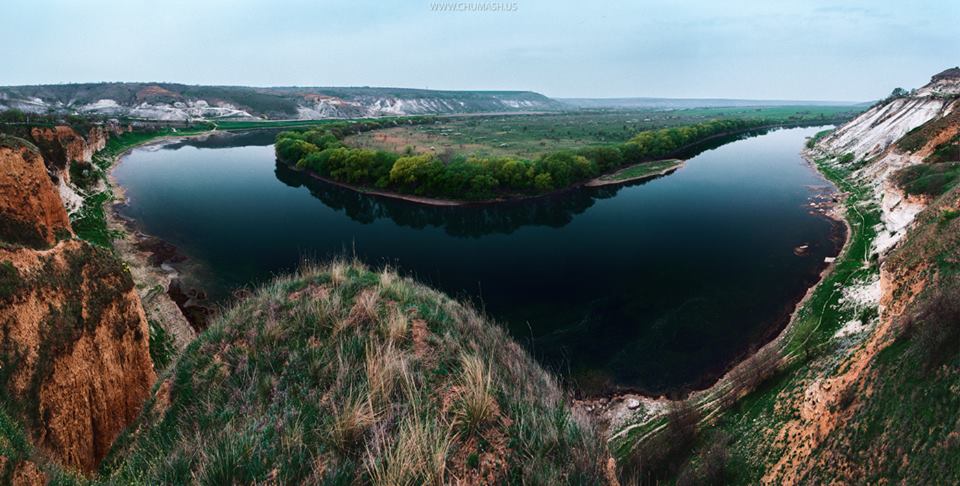
Wineries: Cricova Winery, Milestii Mici Winery, Purcari Winery, Cojusna Winery.
Сountry estates: “Zamfir Ralli-Arbore” Mansion, the Hunting Castle of Manuc Bei.
Natural monuments: Prut Toltres, Natural unity “The Hundred Knolls”, “Emil Racovita” Cave, Taul Park
Reservations: “Padurea din Domneasca” Reservation, “Codrii” Reservation, Iagorlîc” Reservation, Prutul e Jos” Reservation, Plaiul Fagului” Reservation.
Monasteries and Churches: Capriana Monastery, Hincu Monastery, Rudi Monastery, Saharna Monastery, Tipova Monastery, Curchi Monastery, Frumoasa Monastery, Cosauti Monastery, Japca Monastery, the Assumption of the Virgin Mary Church.
Museums: “Alexei Mateevici” House & Museum, “Alexandr Pushkin” House & Museum, “Constantin Stamati” House & Museum, Igor Vieru House and Museum, Museum Complex “Old Orhei”, National Museum of Ethnography and Natural History, National Archaeology and History Museum of Moldova, the Museum of Popular Art, National Gagauz history and ethnographic museum “Dumitru Cara-Ciobanu”.



